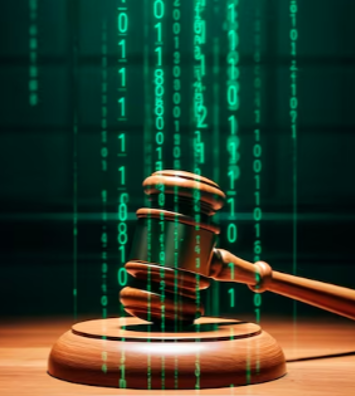Article by Clyde Shuman
The U.S. Court of Appeals for the Federal Circuit has held that the retroactive application of inter partes review (IPR) proceedings to pre-AIA patents is not an unconstitutional taking under the Fifth Amendment. In Celgene Corp. v Peter, Appeal Nos. 2018-1167, -1168 and -1169, the Court held that, although difference exist between IPRs and their reexamination predecessors, those differences do not outweigh the similarities of purpose and substance, and thus do not effectuate a taking of Celgene’s patents.
By way of background, the Coalition for Affordable Drugs VI LLC (“CFAD”) filed IPR petitions challenging the validity of all claims of two patents owned by Celgene: U.S. Patent No. 6,045,501 (“the ’501 patent”) and U.S. Patent No. 6,315,720 (“the ’720 patent”). The Patent Trial and Appeal Board (“Board”) determined that all of the claims of the ’501 patent and claims 1–9 and 11–32 of the ’720 patent were invalid as obvious.
Celgene’s ‘501 patent related to “methods for delivering a drug to a patient while preventing the exposure of a foetus or other contraindicated individual to the drug.” Claim 1 narrowed the drug to teratogenic drugs, and claim 2 further narrowed the drug to thalidomide. In the IPR, CFAD argued—and the Board agreed—that all claims were invalid as obvious over a combination of three references.
Celgene’s ‘702 patent related to an “[i]mproved methods for delivering to a patient in need of the drug, while avoiding the occurrence of an adverse side effect known or suspected of being caused by the drug.” In the IPR, CFAD argued—and the Board agreed—that all 32 claims of the ‘720 patent were invalid as obvious over a combination of other references. On rehearing, the Board modified its decision, upholding the validity of claim 10 of the ‘720 patent.
On appeal, Celgene argued that the Board erred in finding all claims of the ’501 patent and claims 1–9 and 11–32 of the ’720 patent obvious. More importantly, Celgene also argued that the retroactive application of IPRs to patents filed before September 16, 2012, when the relevant provisions of the Leahy-Smith America Invents Act went into effect (“pre-AIA patents”), constituted an unconstitutional taking.
On the merits, the Court started by using the “broadest reasonable interpretation” standard of the claim language, noting that the PTO had since changed its claim construction standard used in IPR proceedings, but that that standard did not apply to the present IPRs.
The Court rejected Celgene’s argument that the claims of the ‘501 patent required the “computer readable storage medium” to be centralized, finding nothing in the intrinsic evidence supporting this. The Court also rejected Celgene’s argument that it would not have been obvious to counsel male patients about the risks of teratogenic drugs, as well as Celgene’s argument that the Board improperly disregarded evidence of secondary considerations of non-obviousness.
For the ‘720 patent, the Court rejected Celgene’s argument that there was no motivation to improve existing methods for avoiding birth defects from exposure to potentially hazardous drugs (e.g., thalidomide), noting Celgene’s professed commitment to making improvements in its program. The Court also rejected Celgene’s argument that a person of ordinary skill in the art would not have been motivated to develop the claimed invention, finding substantial evidence to support the Board’s conclusion.
On the “taking” issue, the Court rejected Celgene’s constitutional challenge to retroactive application of IPRs to pre-AIA patents, concluding that IPRs do not differ from pre-AIA review mechanisms (e.g., reexaminations) significantly enough, substantively or procedurally, to effectuate a taking. The Court noted that the validity of patents has always been subject to challenge in district court, and that, for the last forty years, patents have also been subject to reconsideration and possible cancellation by the PTO, citing ex parte and inter partes reexamination.
The Court found that Celgene’s pre-AIA patents were therefore granted subject to existing judicial and administrative avenues for reconsidering their validity, and that IPRs “are the most recent legislative modification to the PTO’s longstanding reconsideration procedures.”
Relevant here, the Court rejected Celgene’s arguments concerning differences between reexaminations and IPRs, including that IPRs are adjudicative and have discovery, briefing, and an oral hearing.
The Court focused on “the far more significant similarities between IPRs and their reexamination predecessors,” including review on the same substantive grounds, use of the same standard of proof, and use of the same standard for claim construction (since changed for IPRs).
The Court also found that IPRs serve essentially the same purpose as their reexamination predecessors, noting that the Supreme Court had described district court challenges, ex parte reexaminations, and IPRs as different forms of the same thing—reexamination. Per the Federal Circuit, all three serve the purpose of correcting prior agency error of issuing patents that should not have issued.
The Court recognized differences between IPRs and pre-AIA predecessors, noting that post grant review procedures were intentionally more robust to provide a “more efficient system for challenging patents.” The Court compared this to increasing the budget for or number of examiners in the reexamination unit. “While those changes might result in significantly more requests for reexamination and more claims being canceled, we doubt that anyone would argue that they effectuate a taking.”
The Court also rejected Celgene’s argument that IPRs are “adjudicatory in nature,” saying that procedural differences with pre-AIA mechanisms “do not disrupt the expectation that patent owners have had for nearly four decades—that patents are open to PTO reconsideration and possible cancelation if it is determined…that the patents should not have issued in the first place.”
The Court also rejected Celgene’s attempt to distinguish IPRs from district court validity challenges, saying these differences serve only to demonstrate that IPRs are similar to reexaminations.



